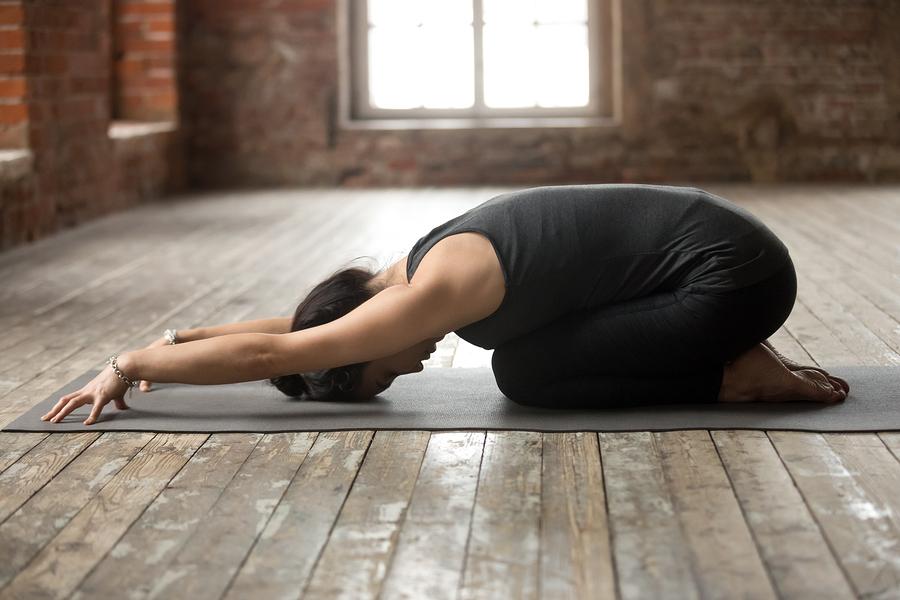
In a previous blog post here at Onto Orthopedics we discussed how yoga can be an effective tool for protecting your health. We specifically discussed this issue in relation to pain and injury of the shoulders and neck. Today we are going to revisit this topic but pay more attention to how yoga can truly help to prevent back injuries and reduce existing pain in this area!
Many orthopedic problems relate to the back and it can be a complicated area to treat if the problem has already become serious. Therefore, working to prevent injuries before they occur is a great idea for everyone and can help to maintain quality of life.
Yoga can be an efficient way for helping to prevent the onset of pain in the back, as well as helping to reduce the impact of existing pain. This is largely due to how the body is moved, stretched, and energised through the various poses involved in a typical practice. This can also be an extremely relaxing way to spend time, which helps to naturally lower your stress levels and encourage feelings of calm and happiness.
The Origins of Yoga
As many people know, yoga is an ancient practice that was born in India. Having been practised in this part of the world for many thousands of years, it has also become incredibly popular in the last few decades in the west.
In the United States alone, close to 20 million people are benefiting from a regular yoga practice – and you can too! When in a class you will experience the combination of breathing, meditation and also the physical stretches, which are where the pain reducing and injury preventing benefits are to be gained.
Yoga for Flexibility and Strength
The poses that are utilised in a yoga class promote flexibility and strength, which not only help to support the back region but your entire body. Additionally, the use of yoga and breathing in combination encourage a sense of calm in the body which is a natural way to tackle pain.
Research has shown that this increase in flexibility and strength will bring health benefits to those who even only practice yoga just twice a week. The results of course will not be immediate, but you will start to see an improvement after a couple of months.
Keeping up this regular practice of twice a week, or even increasing it to include additional sessions, will ensure that you are able to enjoy better health and less pain.
As you feel your body become stronger and more flexible, you may also start to feel able to progress your practice to include more difficult and challenging poses. As you do this, it is essential to pay attention to what your body is telling you, and if something feels overly-difficult or painful then you should always release back to a neutral position and rest for a moment.
Choosing a Yoga Class
There are many different types of yoga – each with their own benefits. If you are going to go along to a yoga class, as opposed to practicing in your own at home, then you might enjoy trying a few different classes to see which suits you best.
Going along to a few different classes will help you to gain a greater understanding of yoga as a whole, and to determine how you can benefit from making yoga an integral part of your fitness routine. When it comes to choosing a type of yoga to help reduce your back pain, then it is always a good idea to opt for a style that isn’t going to be dangerous or damaging to any existing health issues.
Restorative yoga is an optimum choice in this instance as this type of yoga gets your body moving but never in a difficult or overly physically challenging way.
Many people look at yoga from the outside as a complicated practice that they perhaps feel excluded from due to a lack of experience. However, the truth is that this is an activity that anyone is welcome to get involved with, and the majority of yoga classes will be friendly and accessible to all!
Localised Back Pain
If you already experience localised back pain then it is wise to discuss this with your chosen yoga instructor so that they can advise you on the best poses for addressing this issue. They will also be able to suggest any poses that you would be better off avoiding so as not to make antagonise an injury.
However, the majority of poses, when done properly and eased into throughout your continuous practice will only serve to alleviate any problems!
Check back next week to discover which are the best yoga poses for back pain and how to practice them easily at home yourself!
Related Posts
Cigarettes May Inhibit Inflammation Treatments
Axial spondyloarthritis, also known as AxSpa, is a chronic…








